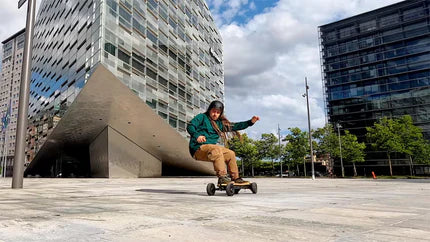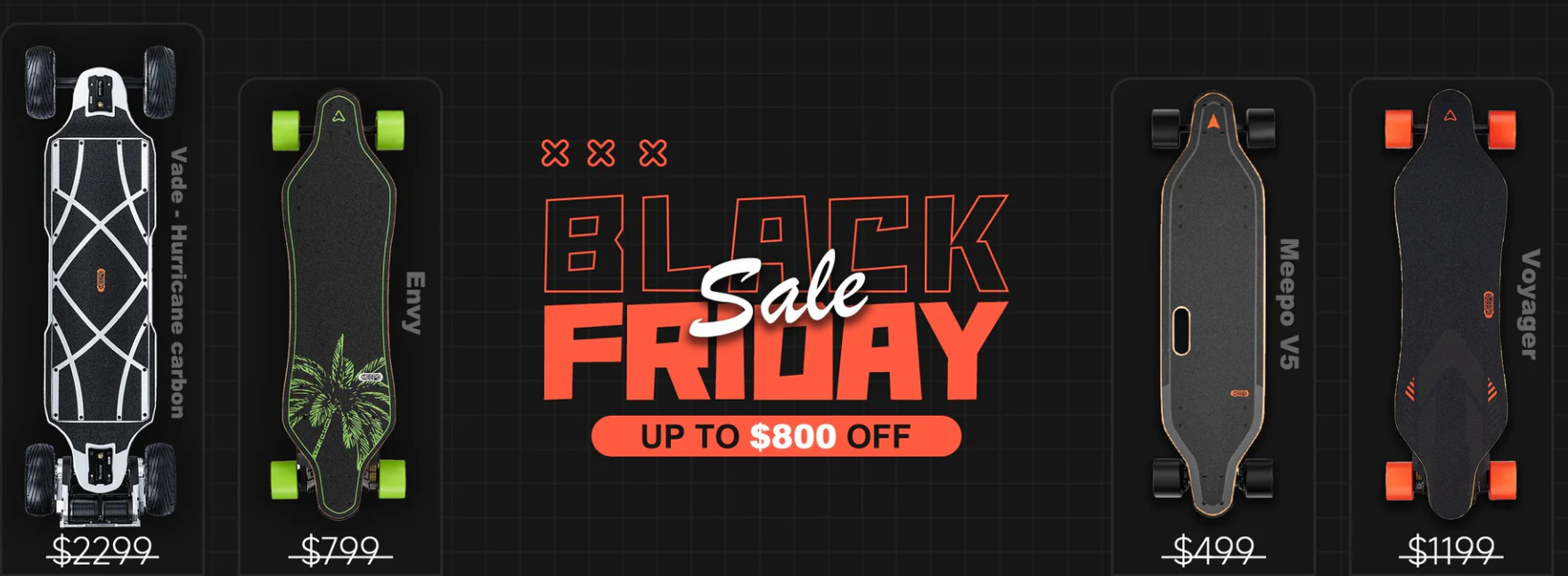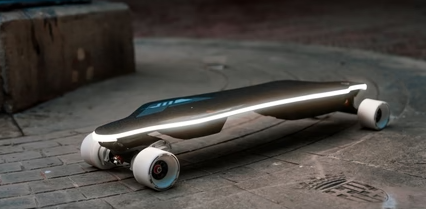| Feature | Hub Drive | Gear Drive | Belt Drive |
| Design | Compact; motor in the wheel hub | Motor connected to gears | Motor turns a belt connected to wheels |
| Acceleration | Moderate responsiveness | Quick takeoff and high torque | Strong acceleration |
| Top Speed | Good performance | Generally highest | High but variable based on setup |
| Handling | Smooth ride | Sportier feel | Balanced handling |
| Maintenance Needs | Low | High | Moderate |
| Weight | Lightweight | Heavier | Mid-range weight |
| Noise Level | Very quiet | Loud | Moderately noisy |
| Customization Options | Limited customization | Highly customizable | Moderate |
| Best For | Commuting, urban environments | Hills, aggressive riding | Varied terrains, some customization |
| Budget | More affordable upfront | Higher price due to complexity | Mid-range pricing |
E-skateboards are taking off as a fun way to get around and enjoy some leisure time. They mix the excitement of skateboarding with the ease of electric power. However, with various drive systems available, choosing the right one can be overwhelming for newcomers and experienced riders alike. This blog post is going to talk about three main types of e-skateboard drives—hub drive, gear drive, and belt drive. Hope this will help you figure out which one is the best fit for your needs.
What Is an E-Skateboard Drive?
Before we jump into the differences, let's clarify what an e-skateboard drive system means. The drive is what gives the skateboard its power and helps it move forward. It has parts like motors,wheels, and mounts that work together to deliver drive, speed, and torque. The type of drive system you choose affects the skateboard's performance, efficiency, maintenance requirements, and overall riding experience.

Different Types of E-Skateboard Drives
To help you understand your options better, let's take a closer look at the three primary types of e-skateboard drives: hub drives, gear drives, and belt drives.
Hub Drive
Hub drives integrate the motor directly into the wheel hub, allowing for a compact design. This setup means that the power source is embedded within the wheel itself, eliminating the need for external motors and complicated systems.
| Advantages | Disadvantages |
|
|
Gear Drive
A gear drive system utilizes a motor connected to gears, which then turns the wheels. This method allows for precise control over speed and torque, offering a different riding feel than hub drives.
| Advantages | Disadvantages |
|
|
Belt Drive
Belt drives use a motor to turn a belt that connects to the wheels. This style is known for its ability to deliver great torque while still allowing for some customization.
| Advantages | Disadvantages |
|
|

Hub Drive vs. Gear Drive vs. Belt Drive: A Side-by-Side Comparison
Now that we have a better grasp of each drive system, let's take a look at a side-by-side comparison to see how they measure up in important areas.
Performance
- Acceleration: Gear and belt drives typically deliver quicker results thanks to their higher torque output. That's why they're often the go-to for thrill seekers. Hub drives are also responsive but might not be as quick as you'd expect.
- Top Speed: All three systems impress, but gear drives usually take the lead thanks to their customizable gear ratios.
- Handling: Hub drives offer a smooth ride, gear drives give you that sportier feel, and belt drives kind of sit right in the middle of those two.
Maintenance Needs
Hub Drives are super easy to take care of because they have fewer fewer exposed components. Belt drives need some regular checks and sometimes you'll have to swap out the belts, but overall, they're pretty easy to use. Gear drives require a lot of attention because they can be quite complex and might run into some mechanical problems.
Weight and Portability
Hub drives are usually lighter since they cut out the need for extra parts. Gear drives tend to be on the heavier side due to the extra machinery involved. Belt drives are kind of in the middle, and it all depends on the materials and construction.
Noise Level
As to noise levels, Hub Drives take the cake. They're super quiet, which makes them perfect for neighborhoods. Belt drives can be a bit noisy, and it usually comes down to how well they're taken care of. Gear drives usually make the most noise, which might be a downside in quieter spaces.
Customization Options
Hub Drives come with a few choices because of their integrated design. Gear Drives are super customizable, so they are appealing to anyone who likes to tinker around. Belt drives are also great because they let you change gears, giving you a nice balance of customization and ease of use.

Hub Drive vs. Gear Drive vs. Belt Drive: How to Choose
Now that we've explored the details of each drive system, how do you decide which one is right for you? Here are some factors to consider:
Identify Your Primary Riding Style
- If your focus is on commuting, ease of maintenance and quiet operation might lead you to choose a hub drive.
- If you're looking for adrenaline and rugged terrain capabilities, both gear drives and belt drives would serve you well, offering the torque needed for steep climbs.
- For leisurely rides, a hub drive may provide the best experience due to its smooth operation.
Consider Where You'll Be Riding
If you're cruising city streets, a hub drive can deliver a sleek, quiet ride. For steep inclines and demanding courses, go for a gear drive or belt drive to ensure you have enough power for ascents. Any drive type can perform well on flat surfaces, so personal preference plays a larger role here.
Your Riding Experience Can Impact Your Choice
New riders may find a hub drive easier to handle and maintain. Experienced skaters might appreciate the tuning capabilities of gear drives or belt drives, allowing for performance adjustments.
Lastly, Consider Your Budget
- Hub Drives tend to be more affordable upfront, but advanced models can vary widely.
- Gear Drives often come with a premium price tag due to their intricate mechanics.
- Belt Drives offer a mid-range option, balancing performance and cost effectively.
Navigate Your Choices for the Perfect E-Skateboard Drive
Picking the perfect drive system for your e-skateboard all comes down to what you like, how you ride, and the kind of places you plan to skate in. Hub drives are all about simplicity and a sleek look, gear drives pack a punch with power and customization, and belt drives find that sweet spot between performance and easy upkeep. Learn the pros and cons of each system, and then choose the one that will boost your riding experience.



